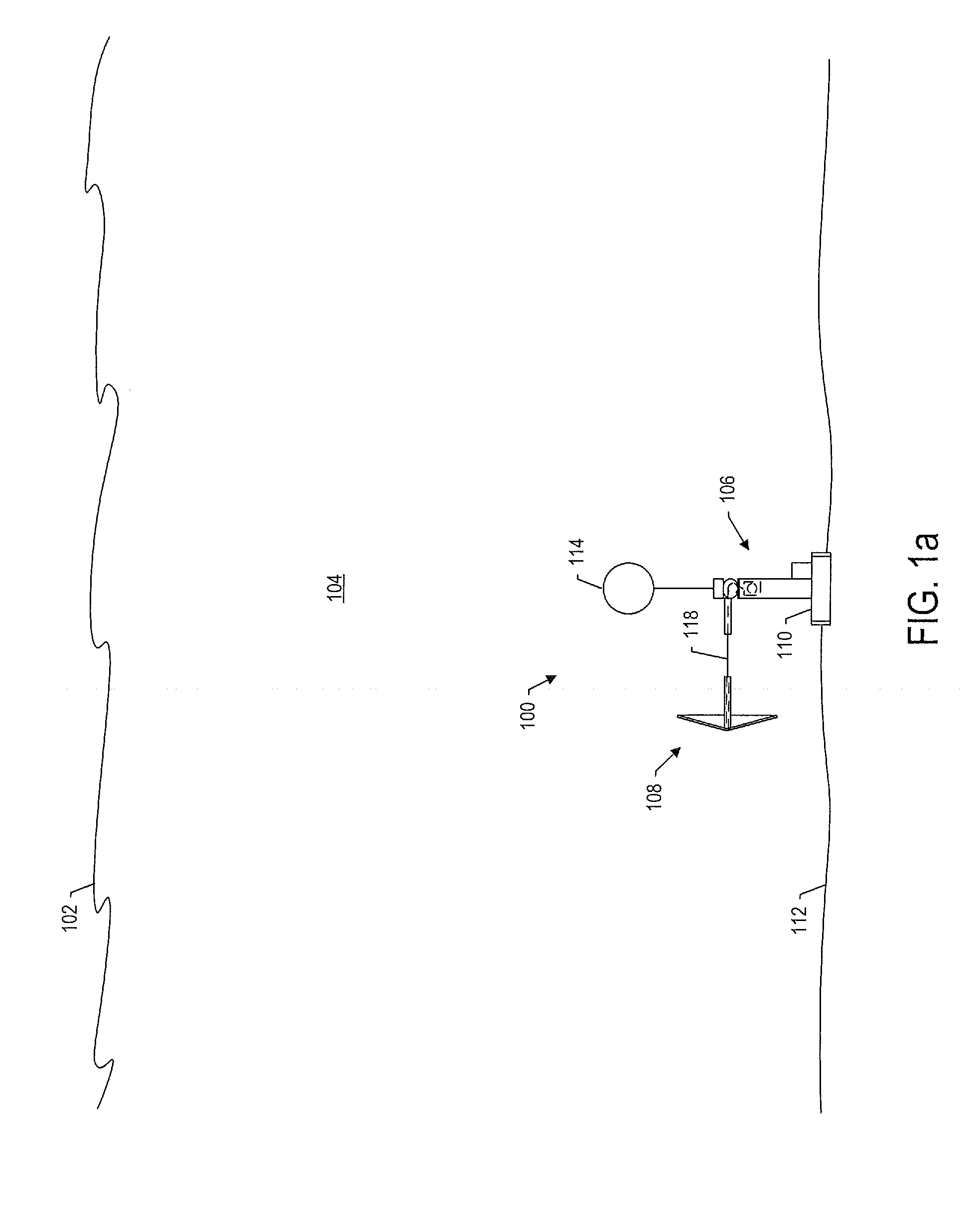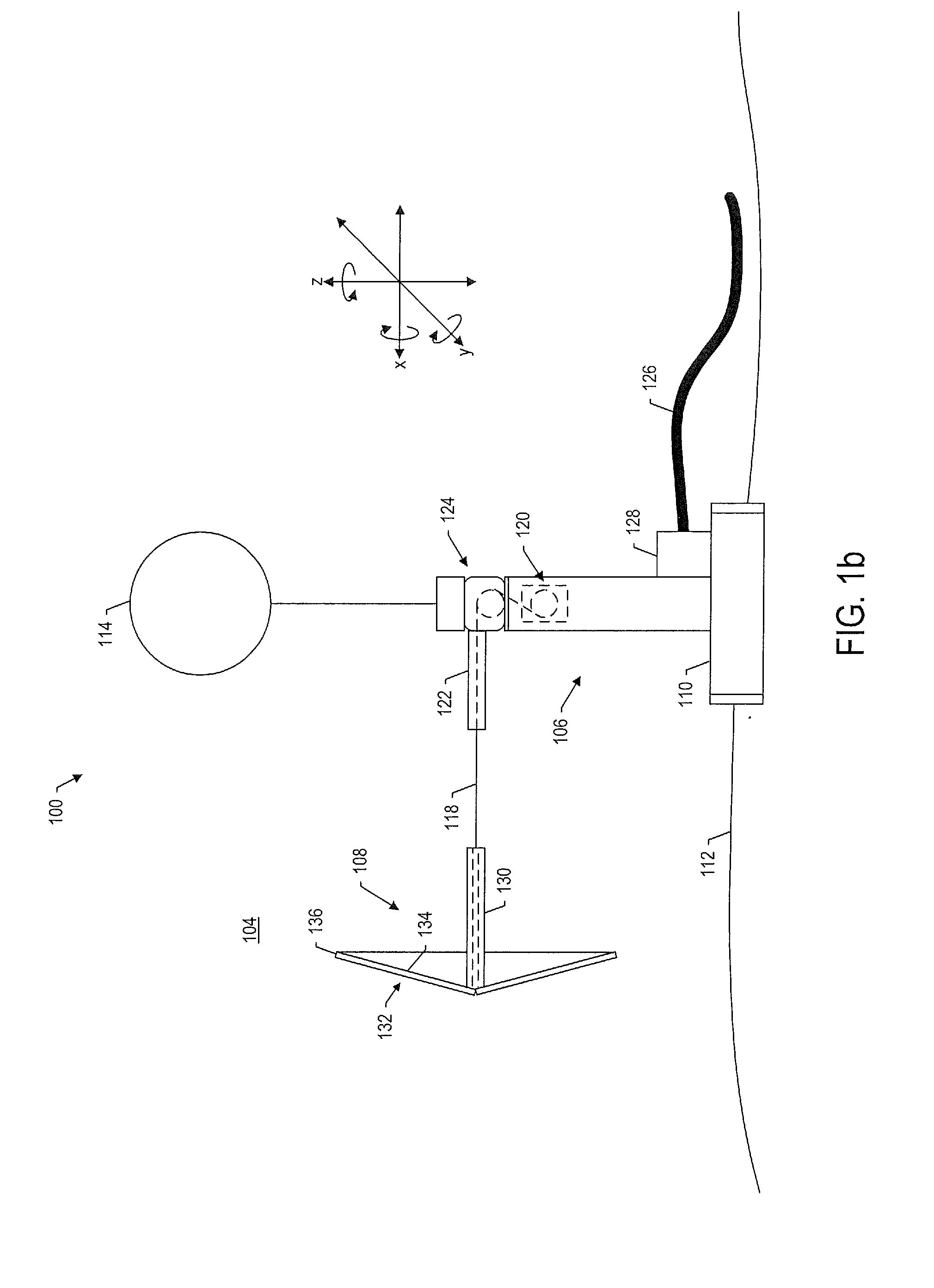System And Method For Converting Fluid Motion Into Electrical Power
a technology of fluid motion and electrical power, applied in the control system, electrical equipment, electrical generator control, etc., can solve the problems of water turbines that require very selective placement, water turbines that typically require placement, and the energy in moving that mass of water every day is absolutely enormous
- Summary
- Abstract
- Description
- Claims
- Application Information
AI Technical Summary
Benefits of technology
Problems solved by technology
Method used
Image
Examples
Embodiment Construction
[0024]Some embodiments of the present disclosure will now be described more fully hereinafter with reference to the accompanying drawings, in which some, but not all variations of the disclosure are shown. Indeed, variations of the disclosure may be embodied in many different forms and should not be construed as limited to the examples set forth herein; rather, these are provided so that this disclosure will be thorough and complete, and will fully convey the scope of the disclosure to those skilled in the art. Examples may be described with reference to converting underwater current into electrical power, such as in the context of ocean, river or stream current. It should be understood, however, that examples may be equally applicable to the conversion of other fluid movement into electrical power. Like reference numerals refer to like elements throughout.
[0025]FIG. 1 illustrates a system 100 according to one example of the present disclosure. As shown, in one example, the system m...
PUM
 Login to View More
Login to View More Abstract
Description
Claims
Application Information
 Login to View More
Login to View More - R&D
- Intellectual Property
- Life Sciences
- Materials
- Tech Scout
- Unparalleled Data Quality
- Higher Quality Content
- 60% Fewer Hallucinations
Browse by: Latest US Patents, China's latest patents, Technical Efficacy Thesaurus, Application Domain, Technology Topic, Popular Technical Reports.
© 2025 PatSnap. All rights reserved.Legal|Privacy policy|Modern Slavery Act Transparency Statement|Sitemap|About US| Contact US: help@patsnap.com



